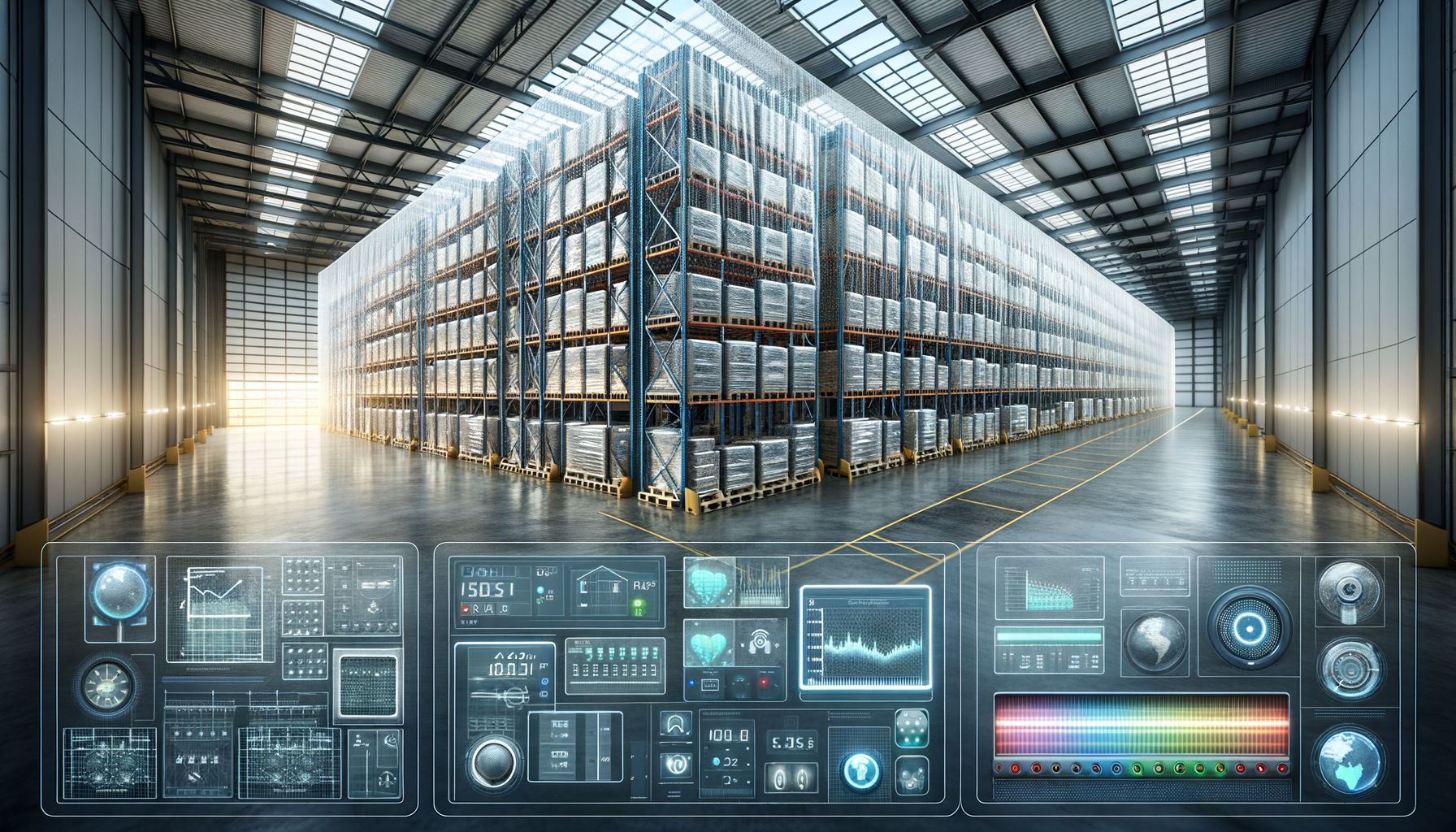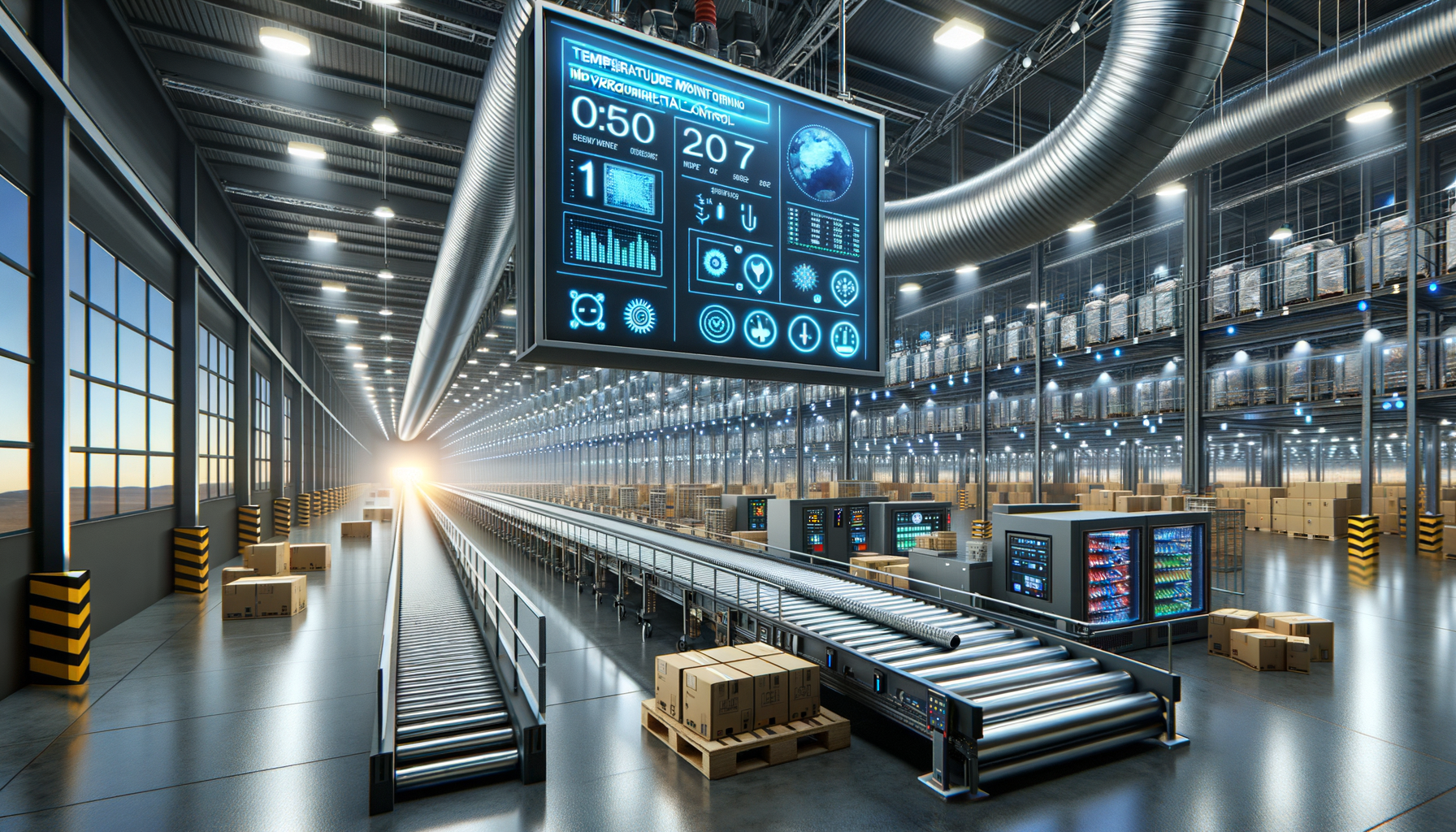The Importance of Temperature Monitoring in Warehouses
Temperature monitoring in warehouses is a critical component of effective supply chain management. It ensures that goods, especially perishable items such as food, pharmaceuticals, and certain chemicals, remain in optimal condition during storage. Temperature fluctuations can lead to spoilage, reduced shelf life, and ultimately, financial losses. For instance, the food industry faces significant challenges with maintaining freshness, as temperature shifts can accelerate decay and lead to health risks. Similarly, pharmaceuticals require strict adherence to temperature guidelines to maintain efficacy.
Moreover, temperature control is not just about preserving product quality but also about compliance with regulatory standards. Many industries are subject to stringent regulations that dictate specific storage conditions. Failing to meet these standards can result in penalties or loss of business credibility. Therefore, implementing a robust temperature monitoring system is essential for businesses to safeguard their products and reputation.
In addition to regulatory and quality concerns, temperature monitoring contributes to energy efficiency. By maintaining consistent temperatures, warehouses can reduce energy consumption, leading to cost savings and a smaller environmental footprint. This alignment with sustainability goals is increasingly important as businesses strive to meet environmental regulations and consumer expectations.
Technologies for Temperature Monitoring
In the modern warehouse, technology plays a pivotal role in maintaining the right environmental conditions. Various technologies are available for temperature monitoring, each offering unique advantages. One of the most common methods is the use of digital thermometers and data loggers, which provide real-time temperature readings and historical data tracking. These devices are crucial for identifying trends and potential issues before they become significant problems.
Another advanced solution is the implementation of wireless sensor networks. These systems offer the flexibility of remote monitoring and control, allowing warehouse managers to receive alerts and make adjustments from anywhere. This capability is particularly beneficial for large facilities where manual checks would be time-consuming and inefficient.
Furthermore, the integration of Internet of Things (IoT) technologies has revolutionized temperature monitoring. IoT-enabled devices can communicate with each other and with centralized systems, providing comprehensive insights into warehouse conditions. This interconnectedness allows for predictive maintenance and automated responses to temperature deviations, thereby enhancing operational efficiency.
When selecting a temperature monitoring solution, businesses should consider factors such as cost, scalability, and ease of integration with existing systems. The goal is to ensure that the chosen technology aligns with the warehouse’s operational needs and long-term objectives.
Challenges in Temperature Monitoring
Despite the availability of advanced technologies, temperature monitoring in warehouses presents several challenges. One of the primary issues is the variability of environmental conditions within large or multi-zone facilities. Different areas of a warehouse may experience varying temperatures due to factors such as proximity to doors, windows, or heating and cooling systems. This variability can complicate efforts to maintain consistent conditions throughout the entire space.
Another challenge is the potential for equipment failure or inaccuracies in temperature readings. Sensors and data loggers must be regularly calibrated and maintained to ensure accurate measurements. Failure to do so can result in incorrect data, leading to inappropriate responses and potential product spoilage.
Moreover, human error remains a significant concern. Even with automated systems, human oversight is necessary to interpret data and make informed decisions. Training staff to understand and respond to temperature data is crucial, as is establishing clear protocols for addressing temperature-related issues.
To overcome these challenges, warehouses should adopt a proactive approach to temperature monitoring. This includes regular equipment maintenance, staff training, and the implementation of redundant systems to ensure continuous monitoring in case of equipment failure.
The Impact of Temperature Monitoring on Supply Chain Efficiency
Temperature monitoring plays a vital role in enhancing supply chain efficiency. By ensuring that products are stored under optimal conditions, warehouses can minimize waste and reduce the risk of product recalls. This reliability is critical for maintaining strong relationships with suppliers and customers, as it guarantees the delivery of high-quality goods.
Additionally, effective temperature monitoring can streamline logistics operations. By integrating temperature data with inventory management systems, warehouses can optimize stock rotation and reduce the time products spend in storage. This efficiency not only lowers operational costs but also improves customer satisfaction by ensuring timely deliveries.
Furthermore, temperature monitoring contributes to better demand forecasting. By analyzing temperature data alongside sales and inventory records, businesses can identify trends and adjust their supply chain strategies accordingly. This data-driven approach enables more accurate predictions of product demand, reducing the risk of overstocking or stockouts.
Overall, temperature monitoring is a crucial element of a responsive and agile supply chain. By investing in robust monitoring systems, businesses can enhance their operational efficiency and strengthen their competitive position in the market.
Future Trends in Warehouse Temperature Monitoring
As technology continues to evolve, the future of temperature monitoring in warehouses looks promising. One emerging trend is the increased use of artificial intelligence (AI) and machine learning to analyze temperature data. These technologies can identify patterns and predict potential issues before they occur, allowing for proactive interventions and minimizing disruptions.
Another trend is the growing emphasis on sustainability. As businesses strive to reduce their environmental impact, temperature monitoring systems are being designed to optimize energy usage. This includes the development of smart systems that adjust temperature settings based on real-time data, reducing energy consumption without compromising product quality.
Moreover, the integration of blockchain technology offers new possibilities for enhancing transparency and traceability in temperature monitoring. By recording temperature data on a decentralized ledger, businesses can provide verifiable proof of compliance with storage conditions, building trust with stakeholders and customers.
Lastly, the rise of 5G technology promises to enhance the capabilities of wireless temperature monitoring systems. With faster data transmission and lower latency, 5G networks will enable more reliable and efficient real-time monitoring, even in large or remote warehouse facilities.
These trends indicate a future where temperature monitoring is more intelligent, sustainable, and integrated into the broader digital ecosystem. As businesses adapt to these advancements, they will be better equipped to meet the challenges of modern supply chain management.



Leave a Reply